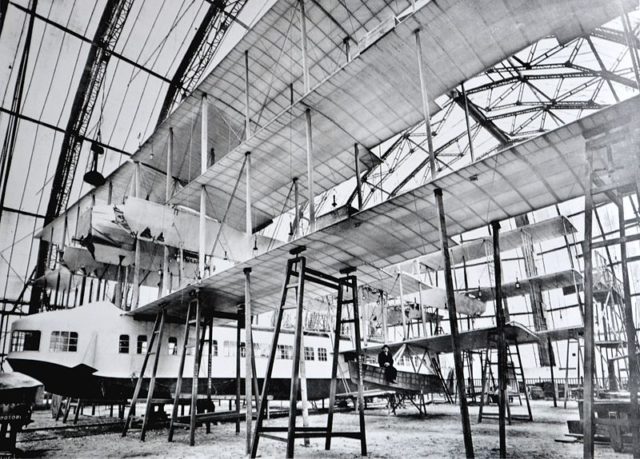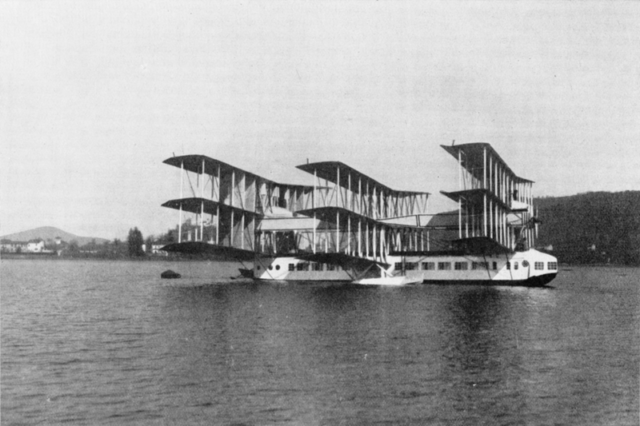While being interviewed by Italian sports newspaper La Gazette dello Sport in 1913 when he was just 27, Gianni Caproni revealed his ambitions of designing an aircraft with the capacity to carry one hundred or more passengers to various locations. However, the First World War hindered these plans, and he had to wait for the chaos to subside before he could make any attempt to follow this ambition.
After the war, Caproni set out to convert a number of his large bombers used in the war into passenger airlines, as well as working on a design for a fairly large and ambitious flying boat that could carry passengers. Caproni took out the patent on his passenger flying boat design on the 6th of February, 1919.

From the very start, Caproni’s idea for a flying boat received harsh criticism from nearly all circles of society including engineers and aviators, some deeming the entire idea to be illogical and eccentric. However, that was not enough to deter Caproni from realizing his dream, and he kept on pitching his idea of an aircraft that would allow travel and transport to remote locations with much more ease and speed than the conventional means of travel.
Caproni was also suggesting to businessmen that investing in the aerial transport would prove to be much more profitable and viable then trying to improve the traditional thoroughfares. The aim was to use his flying boats nationally for local routes, and internationally to build even more bridges between nations. Caproni thought that after the First World War, people needed something like flying boats to bring them closer to each other much faster. In countries such as China, which had larger territories and a poor transport system, Caproni was certain his idea would make a difference.

While discussing the ways Caproni could realize his ambitions, he told others that he was not willing to convert his old wartime bombers into flying boats. Rather Caproni aimed to achieve his objective by introducing a whole new generation of airlines, fitted with the capabilities to operate on long ranges with the capacity to carry more payload. Due to the fact that traditional bombers had a limited ability to carry weight, the latter objective could not have been achieved by a simple refitting, instead requiring an entire overhaul.

The large flying boat was named Transaereo, and contained a passenger cabin in its hull shadowed under three sets of enormous wings.
Each of these wings were made of three aerodynamic surfaces superimposed on each other. One set of the wings was located on the upper front of the hull, one aft and one right in the middle of the hull at a lower angle. The sheer size of the wings simply dominated the structure, and the enormous size indicated a momentous effort put into the design.
